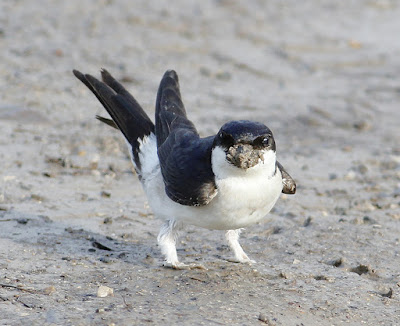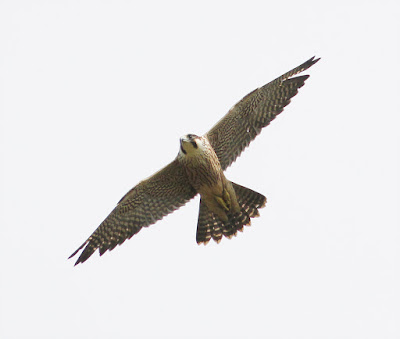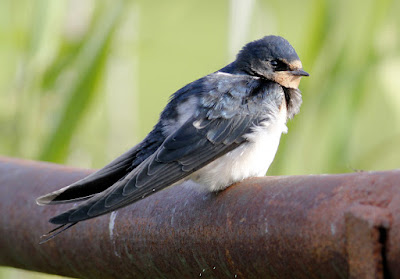Apologies for the misspelling as I do know how to spell "tremendous", but it is very rare that Tree Pipit appears at the top of a ringing session total.
I’d driven quite slowly to Barnacre and even stopped a few times to watch a hunting Barn Owl and then two Buzzards, one sat atop a barn and the other roosting in a half dead tree. The owl disappeared across the fields as Barn Owls mostly do while each of the Buzzards took their leave as the car slowed for a picture.
So it was an hour after dawn before I finally set a couple of nets, more in hope than eager anticipation, but I managed to catch a good mix of species, most of them juveniles of the year. Nineteen birds were caught - 4 Tree Pipit, 3 Goldcrest, 3 Chaffinch, 3 Lesser Redpoll, 2 Willow Warbler,2 Coal Tit, 1 Nuthatch and 1 Robin.
August is a peak month for the southerly migration of Tree Pipits but they are not always seen until their high-pitched flight call, often high above, gives then away to a knowing birder. Even then the birds do not necessarily make landfall as they are a long-distance migrant and on their way to south of the Sahara desert where they winter.
Tree Pipit
A few pairs of Tree Pipits used to breed on this very site some 20-30 odd years ago where the inclined ground and fairly sparse plantation provided ideal habitat requirements. The pipits disappeared during years when the plantation was allowed to become overgrown with invasive rhododendron, so the Tree Pipit here is now a spring and autumn visitor only. Recently the landowners spent many thousands of pounds in removing invasive species and replanting native trees to make the site resemble the original, but it is unlikely that Tree Pipits will return to breed as the species has in recent years also suffered a range contraction in this part of Lancashire.
Tree Pipit
All three of the Lesser Redpolls caught were juveniles and each of them in their partial juvenile moult. The three Goldcrest proved to be juveniles, and then one juvenile and one adult Willow Warbler.
Lesser Redpoll
Goldcrest
Willow Warbler
Other notes from the morning - 1 Stoat, 2 Raven, 120+ Swallows, 1 Great-spotted Woodpecker, a handful of Siskin and 15+ Lesser Redpoll. Also, 2 Crossbill flying overhead towards distant conifers.
From Saturday, a few bits and pieces at Glasson/Conder - 90 Swallows and 1 Grey Wagtail in the area of the yacht basin.
Glasson Dock
In the creeks at Conder Green - 190 Redshank, 23 Dunlin, 2 Greenshank, 2 Common Sandpiper. And the beginnings of an autumn Goldfinch flock with a count of 30+ about the area of Conder Pool.
Goldfinch
Don't forget! There’s more birds soon on Another Bird Blog. Linking today to Stewart's World Bird Wednesday.























































.jpg)












